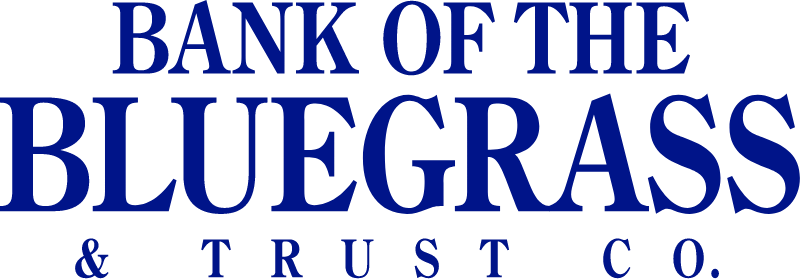Is it a Scam?
Scams can happen to anyone. Scammers are good at what they do.
Scammers are dishonest people. Some lie to convince you to send them money. Others want your information. They try to get information like the username and password for your bank account, your credit card number or your Social Security number.
Ultimately, they want your information so they can pretend to be you and use your accounts without your permission.
What are the signs of a scam?
While scammers may use many different stories to try to get your money or information, they usually have some things in common.
- Scammers contact YOU and say there’s a problem. They might lie and say you owe the government money. They might pretend someone in your family had an emergency. They could say there’s a virus on your computer, or any number of other lies.
- Scammers tell you to hurry. By creating a sense of urgency, they want you to act quickly, without taking time to verify the accuracy of their story.
- Scammers tell you to pay and tell you HOW to pay. Asking you to buy gift cards and give them the numbers on the back of the cards, wiring money through MoneyGram or Western Union, sending them cryptocurrency or using a payment app, are all payment methods that act like cash, making it very hard or impossible to get your money back.
Here are some ways to protect yourself:
- Don’t respond to unexpected calls, emails, texts, or social media messages that ask for money or personal information.
- Take your time. Honest organizations won’t pressure you to pay or give them your information. Verify the information they provide, using contact information you have or obtain online.
- Never pay someone who insists you can only pay with one of the payment methods listed above.
If you suspect a scammer, you can report it to the Federal Trade Commission: ReportFraud.ftc.gov or call 1-877-382-4357
Phishing & Spoofed Phone Calls
Attempts to scam you via phone could come from either a robocall or a real person. While the phone number can look legitimate, phone numbers can easily be disguised or spoofed. Spoofed phone numbers can look like they’re coming from a local area or organization to increase the chances of people answering.
If you answer a call that turns out to be suspicious, the best course of action is to hang up and call the company back directly on a confirmed phone number that you know or find online.
SMS & Test Messages
Like phone calls, text messages are very convincing ways to persuade you to divulge personal information to receive an exciting offer or promotion, or to confirm some type of business transaction.
Be suspicious if you receive a cryptic text that comes from an unknown number, especially if you did not sign up to receive a text message from that company.
Emails
Fraudulent emails, appearing to be from a trusted source such as your bank, or a government agency, may direct you to websites. Once there, you are asked to verify personal information such as name, account and credit card numbers and passwords. These sites are often designed look exactly like the site they are imitating. Visit the site directly, not by following the link provided.
They may also attempt to install a virus on your computer without your knowledge, which can then track your online activity, including the ability to steal usernames and passwords. Never click a link, open an attachment or download a file from someone you don’t know. If you do know the sender, ask yourself questions like, “Do they typically write like this? Do they send emails like this often? Can I call or text them to confirm this email is actually from them and this link is real? Consider that they may have been hacked
The ABA has some interactive resources to help you learn more about phishing scams. Visit www.BanksNeverAskThat.com
Identity Theft: Protect Yourself
Someone might steal your name and address, credit card or bank account numbers, Social Security number, or medical insurance account numbers. They could use your information to get new credit cards or other accounts in your name, get a job, steal your tax refund, or use your health insurance to get medical care.
Protect yourself:
Check your bills and account statements. Look for things you didn’t buy, withdrawals you didn’t make, or changes to your address that you didn’t expect.
Look at your medical bills and insurance statements. Check for charges you don’t recognize.
Check your credit reports for mistakes or accounts you don’t recognize. Equifax, Experian, and TransUnion let you get free reports online once a week. You can also get free yearly credit reports from each bureau at AnnualCreditReport.com or by calling 1-877-322-8228.
The consumer information links below exist to assist customers in locating information and providing guidance on how to file complaints when appropriate.
Federal Trade Commission (FTC) Consumer Response Center
www.ftc.gov
You can file a complaint with the FTC against a company or organization that you believe has cheated you by contacting the Consumer Response Center by phone toll free 877-FTC-HELP (382-4357).
Internet Crime Complaint Center IC3
The mission of the Internet Crime Complaint Center is to provide the public with a reliable and convenient reporting mechanism to submit information to the Federal Bureau of Investigation concerning suspected Internet-facilitated criminal activity and to develop effective alliances with law enforcement and industry partners. Information is analyzed and disseminated for investigative and intelligence purposes to law enforcement and for public awareness.
Consumer Fraud (DOJ/Homepage)
www.usdoj.gov
“Fraud” is a link on the Department of Justice’s (DOJ) homepage under “Information for Individuals and Communities.”
USAGov
Consumer.gov
www.consumer.gov
“Consumer.gov” is a one-stop link to a broad range of federal information resources available online.
Social Security Administration
www.ssa.gov
Report a Fraud: 800-269-0271
Identity Theft Resource Center
www.idtheftcenter.org
858-693-7935
Help 9-1-1 Keep Your Family Safe
Smart911 is a free national service provided to you by your local 9-1-1 agency. By creating a Safety Profile for your household that includes the vital personal and medical information you would want response teams to have in the event of an emergency, your profile is immediately available should you have the need to dial 9-1-1. This allows call takers and first responders to assist you faster and more effectively.
Your family’s profile information is completely private and secure. The details you enter on the secure and protected website are only shared with 9-1-1 dispatchers and first responders in the field, and only when you or your family members dial 9-1-1.
Create your Safety Profile or learn more at www.smart911.com.
Visit www.consumer.ftc.gov for consumer information and resources on a variety of topics such as: Money and Credit, Homes and Mortgages, Health and Fitness, Jobs and Making Money or Privacy and Identity.
Money Smart – A Financial Education Program
Financial education fosters financial stability for individuals, families, and entire communities. The more people know about credit and banking services, the more likely they are to increase savings, buy homes, and improve their financial health and well-being. The FDIC offers Money Smart – A Financial Education Program for Adults, Young Adults and/or Small Business. The curriculum is available in English and Spanish. Visit the following link to learn more: www.fdic.gov/consumers/consumer/moneysmart/index.html.
Corporate Account Takeover
What is Corporate Account Takeover?
Corporate account takeover is a type of fraud where thieves gain access to a business’ finances to make unauthorized transactions, including transferring funds from the company, creating and adding new fake employees to payroll, and stealing sensitive customer information that may not be recoverable. Corporate account takeover is a growing threat for small businesses. In 2011, seventy two percent of data breach cases affected businesses with 100 employees or less1. It is important that businesses understand and prepare for this risk. Cyber thieves target employees through phishing, phone calls, and even social networks. It is common for thieves to send emails posing as a bank, delivery company, court or the Better Business Bureau. Once the email is opened, malware is loaded on the computer which then records login credentials and passcodes and reports them back to the criminals.
Employee Education is Essential, but is Missing the Mark
Ninety two percent of respondents to a recent survey indicated employee education of small business employees was effective in reducing the threat of account takeover2. However, nearly 80 percent of respondents to a small business survey said they had no formal internet security policy, with almost half indicating they provide no internet safety training to employees3.
How do I protect myself and my small business?
The best way to protect against corporate account takeover is a strong partnership with your financial institution. Work with your bank to understand security measures needed within the business and to establish safeguards on the accounts that can help the bank identify and prevent unauthorized access to your funds.
A shared responsibility between the bank and the business is the most effective way to prevent corporate account takeover. Consider these tips to ensure your business is well prepared:
- Educate your employees.You and your employees are the first line of defense against corporate account takeover. A strong security program paired with employee education about the warning signs, safe practices, and responses to a suspected takeover are essential to protecting your company and customers.
- Protect your online environment.It is important to protect your cyber environment just as you would your cash and physical location. Do not use unprotected internet connections. Encrypt sensitive data and keep updated virus protections on your computer. Use complex passwords and change them periodically.
- Partner with your bank to prevent unauthorized transactions.Talk to your banker about programs that safeguard you from unauthorized transactions. Positive Pay and other services offer call backs, device authentication, multi-person approval processes and batch limits help protect you from fraud.
- Pay attention to suspicious activity and react quickly.Look out for unexplained account or network activity, pop ups, and suspicious emails. If detected, immediately contact your financial institution, stop all online activity and remove any systems that may have been compromised. Keep records of what happened.
- Understand your responsibilities and liabilities.The account agreement with your bank will detail what commercially reasonable security measures are required in your business. It is critical that you understand and implement the security safeguards in the agreement. If you don’t, you could be liable for losses resulting from a takeover. Talk to your banker if you have any questions about your responsibilities.
1Source: VeraCode 2011 fraud survey of small business preparedness
2FS-ISAC Account Takeover Task Force survey, 2011
3National Cyber Security Alliance Small Business Survey, 2011

